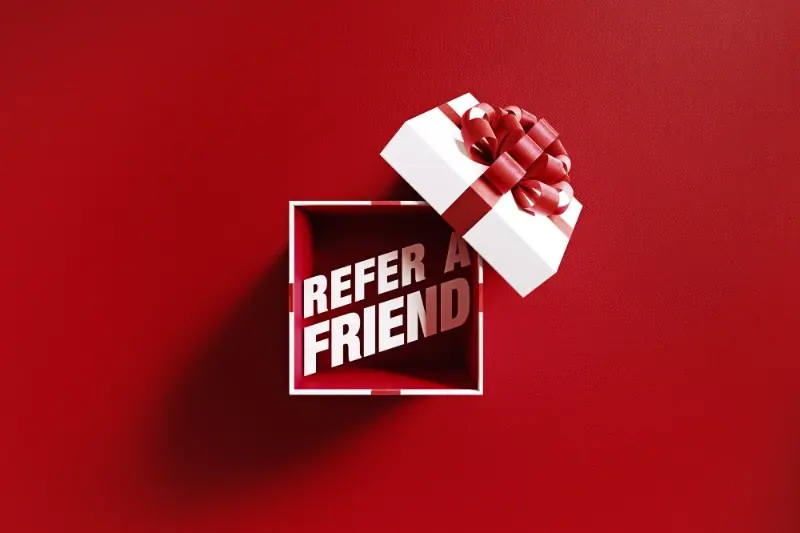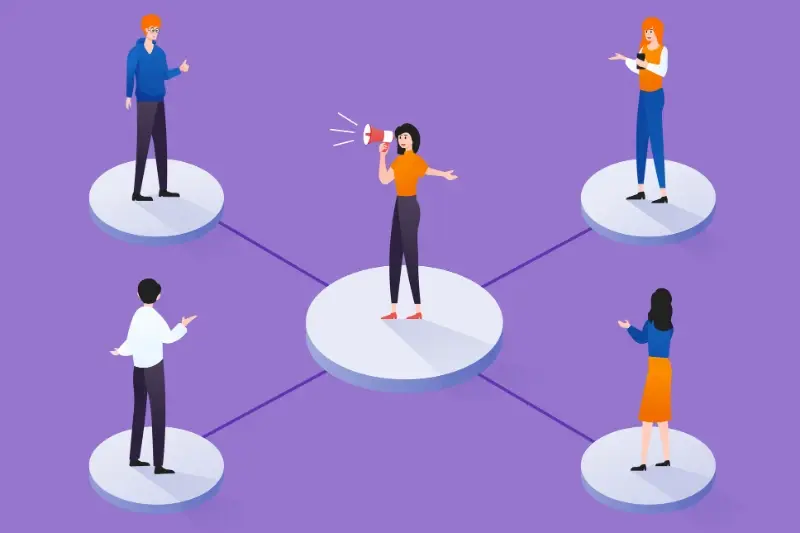Why Your App Referral Program Isn't Working (and How to Fix It)
Here's a fact that will make you check your app analytics twice: most referral programs convert at less than 2%. That means for every 100 people who see your referral offer, fewer than 2 will actually share your mobile app with someone else. The numbers get worse when you look at how many of those referrals turn into active users—we're talking decimal points here.
I've worked with dozens of apps over the years, from fintech startups to major retail brands, and I see the same pattern repeating. Companies launch referral programs with grand expectations, then watch as they flatline within weeks. The marketing team gets excited about growth marketing potential, talks about viral coefficients, and then... nothing. Crickets.
The biggest mistake I see is treating referral programs like a magic bullet for user acquisition rather than a carefully crafted part of your overall growth strategy
The truth is, most referral programs fail because they're built on assumptions rather than user behaviour. Teams focus on the mechanics—the tracking, the rewards, the program optimisation—without understanding why someone would actually want to recommend their app to a friend. But here's the good news: when you get it right, referral programs can become your most cost-effective acquisition channel. You just need to know what you're doing wrong first.
Common reasons why app referral programs fail
Over the years, I've watched countless app referral programs crash and burn—and trust me, it's not pretty for anyone involved. The thing is, most people think they can just copy what Dropbox or Uber did and expect the same results. That's your first mistake right there.
The biggest reason referral programs fail is because the rewards are rubbish. I'm talking about offering 50p credit or some meaningless badge that nobody wants. Users need to feel like they're getting something worthwhile for their effort, not pocket change that barely covers a chocolate bar.
The most common failure points
- Making the sharing process too complicated or buried in menus
- Asking for referrals at completely wrong moments (like right after someone downloads your app)
- Not tracking the right metrics—vanity numbers don't pay the bills
- Offering rewards that don't match what your users actually want
- Forgetting to reward the person who gets referred, not just the referrer
- Setting unrealistic expectations about how quickly you'll see results
The truth is, most referral programs fail because they're built around what the company wants rather than what users need. When you flip that thinking, everything changes.
Understanding what makes users want to share apps
After working with hundreds of mobile app clients over the years, I've noticed something interesting about sharing behaviour. People don't share apps because you ask them to—they share them because they genuinely want to help someone or show off something cool they've discovered.
The psychology behind app sharing is actually quite simple. Users share when they feel proud of what they've achieved, when they've solved a problem that others might have, or when they've found something that makes them look good. This kind of psychology in app development applies across industries, from healthcare to entertainment. Think about it: when was the last time you recommended an app to a friend? You probably did it because it saved you time, money, or made you feel clever for finding it.
What drives sharing behaviour
Users are most likely to share when they experience one of these moments:
- They've achieved something noteworthy within your app
- Your app has solved a real problem for them
- They want to help friends avoid a struggle they've experienced
- Sharing makes them look knowledgeable or helpful
- They feel part of an exclusive community
The key is understanding that sharing is emotional, not transactional. Yes, rewards can help motivate action, but without that underlying emotional trigger, your program optimisation efforts will fall flat. Your growth marketing strategy needs to focus on creating those shareable moments first, then making it easy for users to act on them.
Track when users naturally share your app (without prompts) to identify the perfect moments for referral asks.
Setting up realistic goals and tracking the right metrics
Most app referral programs fail because people set completely unrealistic expectations from day one. I've seen clients who expect their referral program to bring in thousands of new users within the first month—that's just not how it works. Building a solid business case for your mobile app should include realistic referral expectations from the start. A good referral program typically converts between 2-5% of your existing user base into active referrers, and each referrer might bring in 1-3 new users on average.
The metrics you track matter more than you might think. Downloads are vanity metrics that don't tell you much about program success. What you really need to focus on are referral conversion rates, the quality of referred users, and how long they stick around. Referred users often have better retention rates than users from other channels—they're coming with a recommendation from someone they trust.
Focus on these key metrics
Track your referral-to-install rate (how many people actually download after being referred), your referrer participation rate (what percentage of users actually make referrals), and the lifetime value of referred users. These numbers will tell you if your program is working properly. Set monthly goals that increase gradually; expecting explosive growth overnight is a recipe for disappointment and wasted marketing budget.
Designing rewards that actually motivate people
Getting your rewards right is where most mobile app referral programs fall flat on their faces. I've seen countless apps offer rewards that sound good on paper but completely miss the mark when it comes to what users actually want. The biggest mistake? Assuming that any reward will do the trick.
Your rewards need to match what your users value most about your app. If you're running a fitness app, offering premium workout plans makes sense—giving away restaurant vouchers doesn't. The reward should feel like a natural extension of why people use your app in the first place.
Value perception matters more than actual cost
A £5 credit might seem generous to you, but if your average user spends £50 monthly on your app, it won't move the needle. Think about offering percentage-based rewards instead—20% off their next purchase feels more substantial than a fixed amount that might seem trivial.
The best referral rewards solve a problem your users already have, rather than creating new ones they need to figure out
Double-sided rewards work brilliantly for program optimisation too. When both the referrer and the new user get something valuable, you're creating a win-win situation that feels fair to everyone involved. This approach tends to generate more referrals and better long-term engagement from new users who feel welcomed rather than exploited.
Making the sharing process simple and friction-free
Right, so you've got your rewards sorted and people are actually motivated to share your app. But here's where many programmes fall flat on their face—they make sharing harder than solving a Rubik's cube blindfolded. I've seen apps that require users to jump through seven different screens just to send a referral link. That's not going to work.
The golden rule? Keep it stupid simple. Your sharing process should take no more than two taps from wherever the user decides they want to share. One tap to open the sharing options, one tap to send. Done. Anything more than that and you're losing people faster than you can say "referral code".
What makes sharing actually work
The best referral systems I've worked on follow these principles:
- Pre-populate sharing messages so users don't think
- Offer multiple sharing channels (WhatsApp, SMS, email, social media)
- Make referral links work instantly without requiring the recipient to sign up first
- Skip the referral codes entirely—unique links are much easier
- Show sharing progress so users know their referrals are working
The moment you add friction to the sharing process, you're basically telling your users "never mind, don't bother". And trust me, they won't.
Timing your referral asks perfectly
Getting the timing right for your referral requests can make or break your mobile app's growth marketing efforts. Ask too early and users haven't experienced enough value to want to share; ask too late and you've missed the moment when they're most excited about your app.
The sweet spot is right after a user has had a positive experience—what we call a "moment of delight." This could be completing their first workout in a fitness app, finishing a level in a game, or successfully ordering food through a delivery app. They're feeling good about what they've just achieved, and that's when they're most likely to share.
Finding your app's golden moments
Every app has different trigger points. Look at your analytics to find when users are most engaged. Are they more likely to share after using a particular feature? Maybe it's when they save money, complete a task, or achieve a milestone. Track these patterns and build your referral prompts around them.
Don't bombard users with referral requests either. Space them out sensibly—nobody likes feeling pestered. If someone declines once, wait at least a week before asking again, and maybe try a different approach or incentive.
Set up event tracking to identify your app's "wow moments" where users are most engaged, then trigger referral requests immediately after these positive experiences for maximum conversion rates.
Advanced tactics for program optimisation
Once you've got the basics sorted, there are some clever tricks that can really boost your referral program's performance. These aren't the obvious stuff—they're the tactics that separate good programs from great ones.
Segment your users for better results
Not all users are the same, and treating them like they are is a mistake. Your power users who've been with you for months will respond differently to referral requests than someone who downloaded your app yesterday. Create different referral experiences for different user groups. Maybe your loyal customers get access to exclusive rewards, while newer users get simpler, more straightforward incentives. Learning how to personalise app experiences for VIP customers can significantly boost referral participation among your most valuable users.
Test timing beyond the obvious moments
Most apps ask for referrals after positive actions—completing a purchase, finishing a level, or rating the app. But what about testing less obvious moments? Try asking when users return after being away for a few days, or right before they typically close the app. These moments can be surprisingly effective.
Here are some advanced optimisation techniques worth testing:
- A/B testing different reward structures with small user groups
- Creating seasonal or limited-time referral bonuses
- Using personalised referral messages based on user behaviour
- Implementing tiered rewards that increase with more referrals
- Adding social proof by showing how many friends have already joined
The key is to keep experimenting. What works brilliantly for one app might flop for another, so don't be afraid to try new approaches.
Conclusion
Building a successful app referral program isn't rocket science, but it does require patience and attention to detail. I've worked with countless clients over the years who've launched referral programs expecting instant results—only to be disappointed when their mobile app downloads barely budged. The truth is, most programs fail because they're built on assumptions rather than user understanding.
The best referral programs I've seen follow a simple pattern: they know exactly who their users are, what motivates them to share, and they make the whole process ridiculously easy. They don't overwhelm people with complicated reward structures or interrupt users at random moments. Instead, they focus on creating genuine value for both the referrer and the person being referred.
Growth marketing through referrals works when you treat it as a long-term strategy rather than a quick fix. Start small, test everything, and don't be afraid to scrap ideas that aren't working. Your users will tell you what they want through their actions—you just need to listen. Program optimisation is an ongoing process, not a one-time setup. Keep refining, keep testing, and most importantly, keep your users' experience at the heart of everything you do.
Share this
Subscribe To Our Blog
You May Also Like
These Related Stories

The Ultimate Guide to App Referral Programs That Actually Work

Building a Referral Program: From Idea to Implementation for Apps





